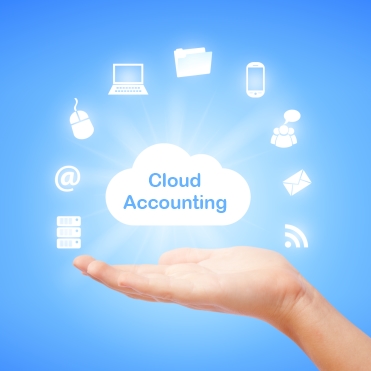Accounting
The Cloud: Streamlining Workflow and Automation
As an example of how accountants might leverage the cloud’s capabilities, clients can just scan or take a snapshot of invoices to be paid using an app. Those images go into a document storage system, where an optical character recognition (OCR) system ...
Oct. 15, 2018

The advent of PCs made performing computations tremendously fast and easy. But a major limitation of the desktop was that it lacked capabilities for streamlining the primary processes involved in accounting and payroll. That limitation made offering bookkeeping and payroll services very cumbersome and inefficient. That’s why most accountants today refrain from offering these services.
The cloud has finally changed that. It enables accountants to streamline the workflow involved in these services. That’s why tens of thousands of accountants who did not previously offer payroll services are now offering highly profitable payroll services. Client accounting services (CAS), which involve transaction processing and bookkeeping, has become a fast-growing practice area, precisely because of the level of automation and workflow capabilities made possible by the cloud and other technologies.
Previously, with a desktop system, bill payment and bookkeeping for a substantial number of clients is a daunting task. Getting invoices and source material, entering data, and printing and mailing checks are labor-intensive tasks. There is no easy way to have the client approve payments. Offering outsourced CFO services is virtually impossible, or its scope is very limited. But with the right cloud solutions, accountants can overcome all these problems and make offering CAS easier and much more profitable.
As an example of how accountants might leverage the cloud’s capabilities, clients can just scan or take a snapshot of invoices to be paid using an app. Those images go into a document storage system, where an optical character recognition (OCR) system picks up the images of those invoices. OCR is not perfect yet, but advanced cloud systems can parse important data like vendor name, invoice amount, etc. with increased accuracy. Invoices where the system is 100% confident about accuracy would be automatically entered into the accounting system. Remaining invoices can be routed for manual confirmation. This process can reduce data entry time by 60 to 70 percent, industry-wide. Once invoices have been entered, they can be sent to a business manager to decide which invoices should be paid fully, partly, or later. Once staff gets client approval, they can pay hundreds of invoices for a number of clients with a few mouse clicks using digital checks. This eliminates the laborious task of printing and mailing invoices. Systems that provide dashboards can also give visual insight into the stages of all of the clients’ invoices. This streamlines the workflow and makes it easy to manage even a substantial CAS practice.
The cloud has transformed accounting by streamlining workflow and automating tasks at unprecedented levels. The cloud enables us to achieve similar levels of productivity gains in payroll processing, turning it into a highly profitable service.
When payroll is processed on a desktop system, clients fill in the time sheets and typically fax it to the accounting firm. Someone at the accounting firm enters that data into the payroll system, which calculates all tax liabilities. A third-party system is typically used for direct deposit, so the staff has to initiate that process. The frequency of tax payments is different for different clients. In fact, the tax payment frequency for the same client could be different for federal, state and local taxes. If the firm has, 50 clients, keeping track of that and initiating tax payments becomes a nightmare.
It also becomes highly stressful as the penalties for missing a tax payment could be very steep. Printing and mailing of paychecks, payroll reports, W-2’s and 1099’s is a labor-intensive task. All that made offering payroll processing a “all pain, little gain” in the desktop era.
The cloud has also completely transformed payroll processing. Advanced professional cloud-based payroll systems automate and simplify most of the processes.
For example, instead of clients faxing time sheets, the system generates a customized Excel spreadsheet with employee names. Employer staff completes the spreadsheet, and that data goes directly into the payroll system. Another option is to give client access to the system to enter data. In both cases, data entry is completely eliminated in the office. Once the data is in the system and approved by either the accounting firm or the employer, with one click of a mouse the direct deposit, all tax deposits, and e-filing of the tax forms are automatically scheduled by the system. Accountants never have to worry about any of that. They may even place paychecks and payroll reports into a client portal, from which a client can download and print those in their office, thus eliminating any printing and mailing of paychecks and reports in the office. Employees can also access their pay stubs at any time from their employee portals.
Cloud computing enables the execution of processes that involve different systems located at different locations. The cloud system can seamlessly interact with accountants’ clients, all different banks, and federal, state and local agencies. This was simply not possible with the desktop. This capability has transformed payroll processing and turned the tables in accountants’ favor.
The benefits of the cloud are numerous, but automation and streamlined workflow are two of the most important for accounting firms. It is essential for professional accountants to make the most of these capabilities to boost their practices.
